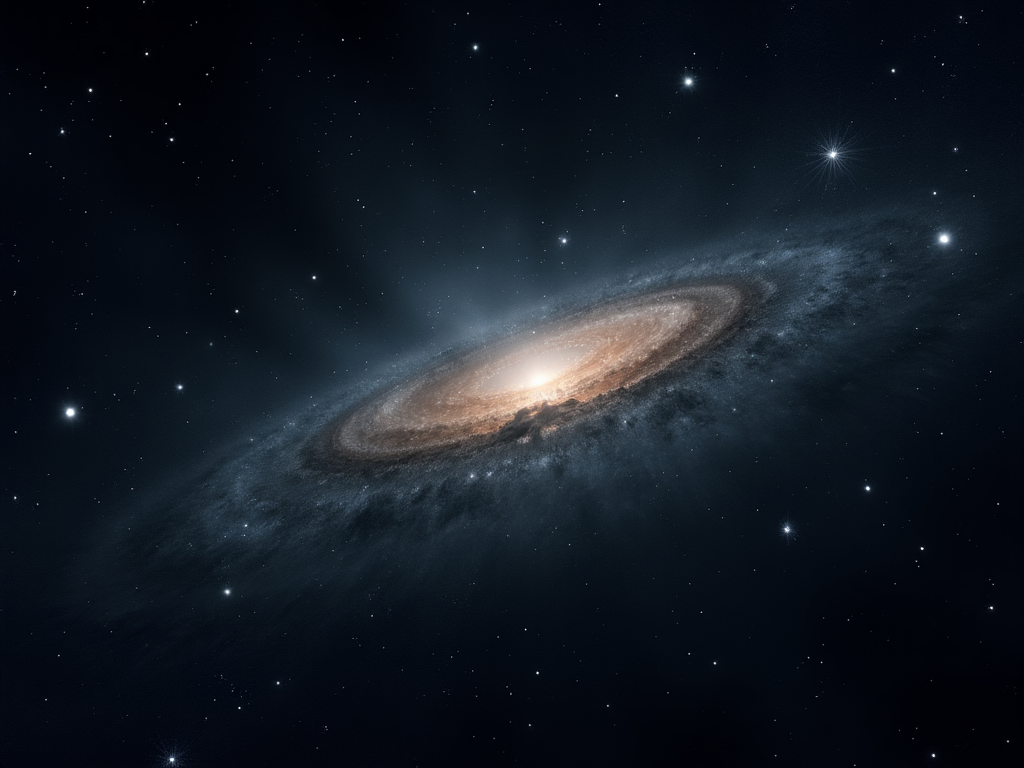
Unraveling the Mystery of Dark Star Clusters on the Galactic Fringe
There is an odd thing going on at the peripheries of our galaxy. Astronomers began to discover dim, huge collections of stars, which practically produce no light at all- dim to the point telescopes could not see them practically for decades. These are all ghostly phenomena that have been called dark star clusters and are causing scientists to reassess many assumptions of how galaxies form evolve and hold themselves together.
However, what is it that these clusters are concealing? And why should they appear with greater weight than they ought to have?
Faint Giants Hiding in Plain Sight
Researchers scouring data from the European Space Agency Gaia mission, which tracks the positions and motions of over a billion stars, were the first to raise the red flags against dark star clusters. The new astronomers were surprised by what they observed in the skies so dense in stellar groupings that they displayed the same tight gravitational hold of conventional star clusters and yet, hardly noticeable by means of optical wavelengths. These were not mistakes or abnormalities. They were actual constructions, which could be noticed only through motion patterns and gravitational effect.
As a 2025 survey by the University of Heidelberg reported, there were detected six more of such clusters between 80,000 and 150,000 light-years of the galactic center. They were found to have the same type of mass signatures as excessives globular clusters but only 2 to 5 percent of the brightness. It hints that such clusters could be made up mostly of red dwarfs, brown dwarfs or even even stellar remnants such as black holes and neutron stars. The reason behind this trend remains a mystery since we might be looking at the possibility that dark matter is contributing towards holding these clusters together, which would nullify classical reasoning on the evolution of stars in such clusters.
Out on the Edge: Why the Galactic Halo Matters
To make sense about the importance of dark star cluster, it is worthwhile to know their locations. The majority of them are in the galactic halo: a vast, barely populated area of the Milky Way. This halo has been neglected in most studies, but it is thought to consist of a large proportion of the mass of the galaxy and contains some very old evidence of the past.
It is even more interesting that some of these dark clusters seem to be fossils of dwarf galaxies that the Milky Way consumed some billions of years ago. This theory is not only theoretical, as simulations of the Sloan Digital Sky Survey indicate, as well as the recent paper in Nature Astronomy (2024) explains how it best explains the remnants of the merging of galaxies, resulting in this low-luminosity fossil that remains. In a manner, these clusters could be the skeletons of dead galaxies long ago, dying and hanging on its periphery.
Is It Possible That These Clusters are Dark Matter Laboratories?
And here is something very interesting indeed. Astrophysicists who think that there may be dark star clusters in the universe estimate that they may be able to use the objects as natural laboratories to study dark matter the almost unseen material that comprises about 27 percent of the universe. The reason? This mass has stronger gravity than what the acknowledged substance can justify
The ratios of their masses to their light are extreme. In other instances, 100:1 or even more. Either dim stars are abundant, or there is another mechanism that keeps them together like maybe the dark matter.” Her group is using the ALMA array in Chile to image any cold gas/ mass concentrations that have been unaccounted in optical data, as a means of reconciling what holds these ghosts together.
This is where it becomes effective to draw an analogy: you are in the woods at night and you know there are large animals around but you cannot see them. You do not hear anything but rustling, vibrations. That is the way these clusters appear–tangible bodies in space.
Tech-Powered Discoveries: Seeing the Unseeable
This was not accidental discovery of these clusters. It is due to newer techniques and the cross-spectral work. Gaia space telescope was the source of proper motion data Subsequently, the infrared Sky surveys of Spitzer Space Telescope and Dark Energy Survey plugged the missing holes. Sky survey tools such as those used by the Vera Rubin Observatory are now being trained in similar objects in deep-field survey data.
Key point bullet tools:
- Gaia DR4: Accurate astrometry of the 3D motion of stars
- Spitzer & WISE: Visible light gave no hint of where its signature was exposed in infrared
- Detection of Anomalies of Massive stars Catalogs Thanks to Machine Learing techniques
It was a many-layered, multi-instrumental affair, as astronomers now refer to it, data-intensive deep sky archeology.
The Universe still has its secrets
But in the end, these dark star clusters teach us something that is very humbling. And in a galaxy that we have seen and photographed and mapped and modelled in detail over several decades are still, in the darkness, immense objects having unimaginable effects on the gravitational tides and revising the physics manuals. They are a metaphor about science itself: each time we feel that we already know the picture, the universe pulls up another curtain a little bit.
My take? We cannot keep wondering what other things are out there, but we should know what other things we have already overlooked. It may be that the true frontier is not some new space, but some new knowledge. The black star clusters may be just the tip of an iceberg in the universe of which we have seen but a beginning.